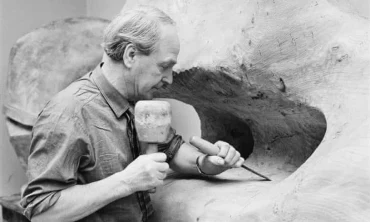
- 357 Lê Hồng Phong, P.2, Q.10, TP.HCM
- Hotline 1: 1900 7060
Hotline 2: (028) 3622 8849
IELTS Reading: Bovid – Phân tích từ vựng
Hôm nay, Phương Nam Education sẽ chia sẻ với các bạn một số từ vựng liên quan đến bài đọc trong đề thi IELTS dưới dây, hi vọng các bạn có thể bổ sung thêm những từ vựng mà mình chưa biết đến một cách hiệu quả!
BOVIDS
A bovid is any member of almost 140 species of ungulates belonging to the family Bovidae. The bovids are the largest family of hoofed mammals and are native to Africa, Europe, Asia, and North America. Members include antelope, bison, buffalo, cattle, sheep and goats. Bovids have mutually beneficial symbiotic relationships with bacteria and other microorganisms that allow the digestion of cellulose, the most abundant form of living terrestrial biomass, but one that is indigestible for many animals, including humans.
Bovids are not so common in endemic insular faunas and are mainly recorded in Southeast Asia, Japan and some Mediterranean islands. Ely the late Miocene, the bovids rapidly diversified, leading to the creation of 70 new genera. This late Miocene radiation was partly because most bovids became adapted to more open, grassland habitats. Some species of bovid are solitary, but others live in large groups with complex social structures.
All bovids have the similar basic form—a snout with a blunt end, one or more pairs of horns immediately after the oval or pointed ears, a distinct neck and and a tail varying in length and bushiness among the species. However, the bovids show great variation in size: the gaur can weigh as much as 1,000kg and stands 2-3m high at the shoulder. The royal antelope, at the opposite extreme, is only 25cm tall and weighs at most 3kg.
Despite differences in size and appearance, bovids are united by the possession of certain common features. Being ruminants, the stomach is composed of four chambers: the rumen (80%), the omasum, the reticulum, and the abomasum. Bovids retain undigested food in their stomachs to be regurgitated and chewed again as necessary Bovids are almost exclusively herbivorous. Most bovids bear 30 to 32 teeth. While the upper incisors are absent, the upper canines are either reduced or absent. Instead of the upper incisors,bovids have a thick and tough layer of tissue, called the dental pad, which provides a surface to grip grasses and foliage. All bovids have four toes on each foot—they walk on the central two (the hooves), while the outer two (the dewclaws) are much smaller and rarely touch the ground. Bovid horns vary in shape and size: the relatively simple horns of a large Indian buffalo may measure around 4m from tip to tip along the outer curve, while the various gazelles have horns with a variety of elegant curves.
Bovids are the largest of 10 extant families within Artiodactyla, consisting of more than 140 extant and 300 extinct species. Fossil evidence suggests five distinct subfamilies: Bovinae (bison, buffalos, cattle, and relatives). Antelope (addax, oryxes, roan antelopes and relatives), Caprinae (chamois, goats, sheep, and relatives), Cephalophinae (duikers), and Antilocapridae (pronghorn). Unlike most other bovids, Bovinae species are ail non-territorial. As the ancestors of the various species of domestic cattle, banteng, gaur, yak and water buffalo are generally rare and endangered in the wild, while another ancestor, auroch, has been extinct in the wild for nearly 300 years.
Antelope is not a cladistic or taxonomically definedgroup.The term is used to describe all members of the family Bovidae that do not fall under the category of , cattle, or goats. Not surprisingly for animals with long, slender yet powerful legs, many antelopes have long strides and can run fast. There are two main sub-groups of antelope: Hippotraginae, which includes the oryx and the addax, and Antilopinae, which generally contains slighter and more graceful animals such as gazelle and the springbok. The antelope is found in a wide range of habitats, typically woodland, forest, savannah, grassland plains, and marshes. Several species of antelope have adapted to living in the mountains and rocky outcrops and a couple of species of antelope are even semi-aquatic and these antelopes live in swamps, for instance, the sitatunga has long, splayed hooves that enable it to walk freely and rapidly on swampy ground.
Subfamily Caprinae consists of mostly medium-sized bovids. Its members are commonly referred to as the sheep and the goat, together with various relatives such as the goral and the tahr. The group did not reach its greatest diversity until the recent ice ages, when many of its members became specialised for marginal, often extreme, environments: mountains, deserts, and the subarctic region. Barbary and bighorn sheep have been found in arid deserts, while Rocky Mountain sheep survive high up in mountains and musk oxen in arctic tundra.
The duiker, belonging to Cephalophinae sub-family is a small to medium-sized species, brown in colour, and native to sub-Saharan Africa. Duikers are primarily browsers rather than grazers, eating leaves, shoots, seeds, fruit buds and bark. Some duikers consume insects and carrion (dead animal carcasses) from time to time and even manage to capture rodents or small birds.
The pronghorn is the only living member of the sub-family Antilocapridae in North America. Each "horn" of the pronghorn is composed of a slender, laterally flattened blade of bone that grows from the frontal bones of the skull, forming a permanent core. Unlike the horns of the family Bovidae, the horn sheaths of the pronghorn are branched, each sheath possessing a forward-pointing tine (hence the name pronghorn). The pronghorn is the fastest land mammal in the Western Hemisphere, being built for maximum predator evasion through running. Additionally, pronghorn hooves have two long, cushioned, pointed toes which help absorb shock when running at high speeds.
Questions 1 -3
Choose the correct letter, A, B, C or D.
Write your answers in boxes 1-3 on your answer sheet.
1 Bovids mostly inhabit
A. Africa.
B. Eurasia.
C. Southeast Asia.
D. South America.
2 What are the most favorable locations for the existence of bovids?
A. tropical forests
B. wetlands
C. mountains
D. open grassy areas
3 What is the common feature of idle bovid species?
A. Their horns are short.
B. They store food in the body.
C. They have upper incisors.
D. Their hooves are undivided.
Questions 4 - 8
Look at the following characteristics (Questions and the list of sub-families below.
Match each characteristics with the correct:
Write the correct letter, A-D, in boxes 4-8 on your answer sheet. NB You may use any letter more than once.
4 can survive in harsh habitats.
5 move at a high speed.
6 origins of modern ox and cow.
7 does not defend a particular area of land.
8 sometimes take small animals as their foodsupply.
A. Bovinae
B. Antelope
C. Caprinae
D. Cephalophinae
Questions 9-13
Answer the questions below. Choose NO MORE THAN THREE WORDS from the passage for each answer.
Write your answers in boxes 9-13 on your answer sheet.
9 What is the smallest species of Bovids?
10 Which member of Bovinae has died out?
11 What helps sitatunga move quickly on swampy lands?
12 Where can Barbary sheep survive?
13 What is the only survivor of Antilocapridae?
PHÂN TÍCH TỪ VỰNG:
Exp: “It will be a mutually beneficial project.”
Exp: “While she was in Hawaii, she studied the local flora and fauna.”
Exp: “In the distance was a solitary building.”
Exp: “Owls regurgitate partly digested food to feed their young.”
Exp: “The iguanadon was a herbivorous dinosaur.”
Exp: “The Everglades are an area of swamp in southern Florida.”
Exp: “His ancestors were bred for bolting foxes and wildcats among the rocky headlands of the subarctic islands.”
Exp: “A similar pattern was observed at the carrion baits.”
Exp: “He put his hands around her slender waist.”
Exp: “She is looking for a permanent place to stay.”
THƯ VIỆN LIÊN QUAN

Reading là một trong bốn phần thi bắt buộc của bài thi IELTS, đây cũng được xem là phần thi thử thách nhất để chinh phục được band điểm cao. Hãy...

Bài viết cung cấp cho đọc giả Bài tập Reading part 3 - Chủ đề: Why fairy tales are really scary tales - Có đáp án

Bài viết cung cấp cho đọc giả Bài tập Reading part 2 - Chủ đề: The Desolenator: producing clean water - Có đáp án

Bài viết cung cấp cho đọc giả Bài tập Reading part 1 - Chủ đề: Henry Moore (1898-1986) - Có đáp án
Hoặc gọi ngay cho chúng tôi:
1900 7060
 | Chính sách bảo mật thông tin | Hình thức thanh toán | Quy định chung
| Chính sách bảo mật thông tin | Hình thức thanh toán | Quy định chung
Giấy chứng nhận đăng ký doanh nghiệp số 0310635296 do Sở Kế hoạch và Đầu tư TPHCM cấp.
Giấy Phép hoạt động trung tâm ngoại ngữ số 3068/QĐ-GDĐT-TC do Sở Giáo Dục và Đào Tạo TPHCM cấp